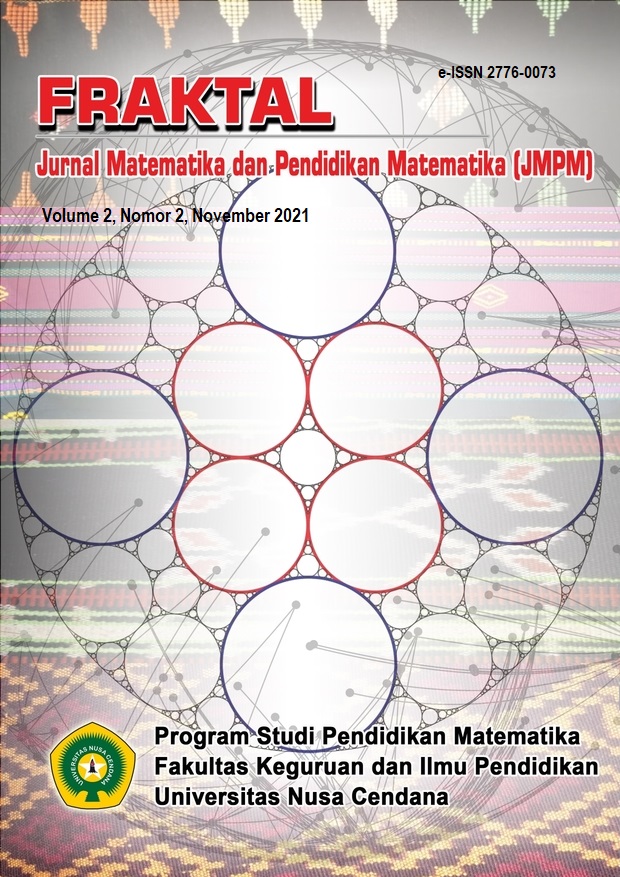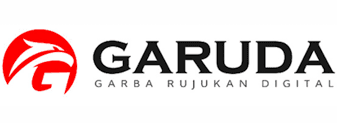Tren Blended Learning untuk Pengembangan Keterampilan Matematika Siswa
Abstract
This review aims to describe the model, characteristics, and design of blended learning, to describe the trend of research blended learning in supporting the development of students' mathematical thinking skills and to provide recommendations for blended learning in supporting the development of students' mathematical thinking skills in the future. The method used in this paper is an article review method which is carried out in three stages, namely identifying keywords related to blended learning in developing mathematical thinking skills, article search strategies, and analyzing articles.
Blended learning is a combination of learning patterns, between face-to-face learning and online learning. The trend of Blended learning is carried out with online learning and face-to-face learning in class is carried out alternately (rotational model), using various LMS. The results of the article analysis show that the blended learning stage can develop students' mathematical thinking skills, namely the seeking of information stage students are directed to think critically. At this stage students are more motivated and independent in finding or accessing materials online. Then at the stage of acquisition of information and synthesizing of knowledge, students are directed to solve problems, use mathematical understanding skills, reasoning, connection and representation skills, communication and collaboration, and think critically through discussions, presentations, and work on practice questions. In addition, students look more enthusiastic and motivated because it is adjusted to their learning style and learning speed and students are directed to be independent in learning the material.
The researcher recommends a blended learning design using the flipped classroom model with online learning using the Moodle LMS in which each stage of blended learning, students are directed to rely on mathematical thinking skills.
Keywords : Blended learning and mathematical thinking skills
Downloads
References
Graham, C., Allen, S., & Ure, D. (2005). Benefits and Challenges of Blended Learning Environmets. In Mehdi Khosrow Puor (Ed). Encyclopedia of Information Science and Technology. Amerika Serikat: Idea Group Inc.
Hendarita, Y. (2018). Model Pembelajaran Blended Learning dengan Media Blog. (Online). Tersedia di: https://sibatik.kemdikbud.go.id/inovatif/assets/file_upload/pengantar/pdf/pengantar_3.pdf. Diakses tanggal 7 November 2020.
Husamah. (2014). Pembelajaran Bauran (Blended Learning) Terampil Memadukan Keunggulan Pembelajaran face to face, E-learning Offline-Online dan Mobile Learning. Malang: Prestasi Pustaka.
Millatana, M., E. (2019). Peningkatan Prestasi Belajar Matriks dengan Pembelajaran Blended Learning Berbantuan Google Classroom di Kelas XI IPS 1 SMA Negeri 7 Yogyakarta. Jurnal Ideguru, 4(2), 76-85.
Pradnyana, G., A. (2013). Blended Learning. (Online). Tersedia di: https://docplayer.info/70769074-Learning-blended-gede-aditra-pradnyana-s-kom-m-kom.html. Diakses tanggal 18 Januari 2021.
Rosenberg, M. J. (2001). E-Learning: Strategies for Delivering Knowledge in The Digital Age. USA: McGraw-Hill Companies.
Staker, H. & Horn. M. B. (2012). Classifying K-12 Blended Learning. (Online). Tersedia di: https://eric.ed.gov/?id=ED535180. Diakses tanggal 18 Januari 2021.
Sudiarta, I. G. P. & Sadra, I. W. (2016). Pengaruh Model Blended Learning Berbantuan Video Animasi terhadap Kemampuan Pemecahan Masalah Konsep Siswa. Jurnal Pendidikan dan Pengajaran, 49(2), 48-58.
Ulya, H. & Rahayu, R. (2021). Hubungan Keterampilan Proses Berpikir Matematika dengan Hasil Belajar Mahasiswa. Aksioma: Jurnal Program Studi Pendidikan Matematika, 10(1), 262-272.
Wijaya, I. M. K., Suwaken, G., & Mertasari, N. M.S. (2016). Pengaruh Penerapan Model Pembelajaran Blended Learning terhadap Motivasi Berprestasi dan Prestasi Belajar Matematika Siswa SMA Negeri 1 Singaraja. Jurnal Wahana Matematika dan Sains, 10(2), 36-47.
Copyright (c) 2021 FRAKTAL: JURNAL MATEMATIKA DAN PENDIDIKAN MATEMATIKA

This work is licensed under a Creative Commons Attribution-NonCommercial-ShareAlike 4.0 International License.
- Hak publikasi atas semua materi naskah jurnal yang diterbitkan/dipublikasikan dalam situs E-Journal Fraktal ini dipegang oleh dewan redaksi dengan sepengetahuan penulis (hak moral tetap milik penulis naskah).
- Ketentuan legal formal untuk akses artikel digital jurnal elektronik ini tunduk pada ketentuan lisensi Creative Commons Attribution-ShareAlike (CC BY-SA), yang berarti Jurnal Fraktal berhak menyimpan, mengalih media/format-kan, mengelola dalam bentuk pangkalan data (database), merawat, dan mempublikasikan artikel tanpa meminta izin dari Penulis selama tetap mencantumkan nama Penulis sebagai pemilik Hak Cipta.
- Naskah yang diterbitkan/dipublikasikan secara cetak dan elektronik bersifat open access untuk tujuan pendidikan, penelitian, dan perpustakaan. Selain tujuan tersebut, dewan redaksi tidak bertanggung jawab atas pelanggaran terhadap hukum hak cipta.

 Maria Shelyn Fobia(1*)
Maria Shelyn Fobia(1*)










